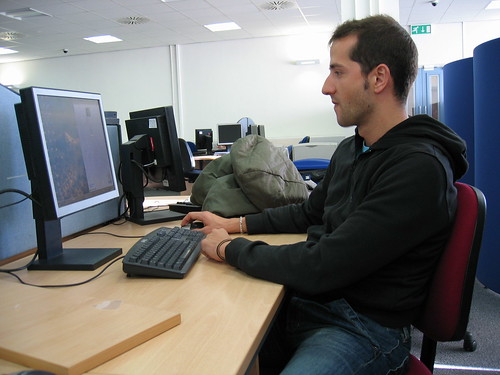Sitting at a desk for hours a day is an increasingly common occurrence. However, it can wreak having on your spine, your neck, and other joints and muscles in your upper body. Whatever your reason for doing so, spending long amounts of time sitting at a desk can make it difficult to maintain good posture, which increases the risk of muscle strain and leaves you heading straight for your closest physiotherapy clinic. Below are some tips for how to make the best out of such a situation to avoid serious medical problems down the line.
Fix Your Posture
One of the most important preventative measures that you can take to avoid muscle and joint pain is to correct the way that you sit at your desk. Adjust your chair in such a way that your lower back is correctly supported, as this will diminish the amount of strain placed on it. When sitting, your feet should be flat on the floor, your wrists and forearms should be straight and parallel to the floor, and your elbows should be at your side in such a way that your arms form an L –shape at the elbows. If your feet aren’t flat on the floor, ask your workplace management for a footrest that lets you rest them at a comfortable level. Avoid crossing your legs, which can cause other problems related to correct posture. And never, ever slouch or hunch at your desk!
Source :https://www.flickr.com/photos/tripu/126345857/
Adjust Your Equipment
It is pretty much a given that if you’re working at a desk, you will be using a computer at some point during your workday, if not for its entirety. Position objects that you use frequently at an accessible distance so that you don’t have to repeatedly stretch or twist to reach things, such as your phone or stapler. The same goes for your keyboard and mouse. Have your keyboard in front of you, with a gap of about half a foot so that you can rest your wrists every so often. Keep your wrists straight while using the keyboard, using a wrist rest if necessary to also keep them at the same level as the keyboard. Station your mouse close to yourself, and try using a mousepad with a wrist rest to avoid bending it in awkward positions and to keep it straight.
Stretch it Out
Don’t stay sitting the entire time. Get up every so often and stretch yourself out. If you’d rather be discreet about it at your workplace, you can shrug your shoulders and shake your head slowly to release the neck and shoulder muscles. Since your wrists and arms will also be strained, stretch them by pointing your fingers. Stretch one hand out in front of you, and use the other to gently pull your fingers down when your wrist is pointing downwards, and vice versa. One of the most important tips is to get up and walk when you can.
Maintaining good posture is the key to avoiding unnecessary muscle and joint pains and aches while sitting still at a desk for hours every day. Follow the tips above or contact a physiotherapist to see what would be best for you. Our Physiotherapy clinic in Melbourne treats a large number of office workers who sit at desks all day with poor posture. The good news is it can be fixed and prevented.
Sources:
http://www.webmd.com/fitness-exercise/stretching-exercises-at-your-desk-12-simple-tips?page=2
http://www.nhs.uk/Livewell/workplacehealth/Pages/howtositcorrectly.aspx
http://www.backfocus.com.au/ergonomic-physiotherapy-advice-for-sitting-at-your-desk/

